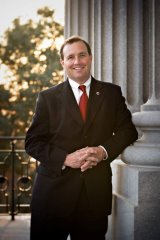
Santee Cooper plans to build a new coal-fired power plant in the Pee Dee region and a lot of the environmentalists are up in arms. Let me try to put some things in perspective. From what I have read, this plant will be the most state-of-the art coal burning power plant in the United States, with the best technology for clean emissions. Sure, it is a business proposition for Santee Cooper. Just as important, having the power supply for business and industry, manufacturing and residential demands may help South Carolina compete globally for jobs or be the deciding factor that keeps these jobs here and not moved to China.
It is not funny that I mentioned China. If we want to discuss clean air and emissions from coal-fired power plants, we need to note that China is bringing a new power plant on-line weekly if not daily! Most of which are coal burning. There are no regulations on these plants - none - concerning the emissions. That is why the U. S. didn't sign the Kyoto Protocol - because the regulatory burden would have been on U. S. manufacturing and power producers, not China and other developing nations. I am not saying that we need to have a laissez-faire attitude about the environment. We need to make sure that Santee Cooper does what it plans to do - use the latest technology to insure that the emissions there are as clean as possible. But at the same time, I think the environmentalist dollars (and there are a bunch) could be better spent encouraging Congress to put as much pressure on China to do something about its emissions. I mean, heck, something would be better than nothing, right?
If we want to talk clean power, then nuclear is the answer. There again, the environmentalist movement has been its own worst enemy in that arena. The U. S. has not permitted a single new nuclear power plant in over 30 years, due to the efforts of the environmentalist movement. Now, however, even the environmentalists have come to agree, in part I believe, that nuclear power is the cleanest power available at the present time. We need to get moving in this country on permitting nuclear power - for the environment and for lessening our dependence on foreign fossil fuels. The failure to do so has put us behind nations like France and England in terms of clean energy production. Furthermore, thanks to an Executive Order issued by President Jimmy Carter, the U. S. only gets about 5% of the available energy from each uranium fuel rod by not recycling. France gets about 95% of the available energy from each fuel rod, resulting in less waste and more proficiency.
Don't get me wrong here. I, too, am concerned about air and water quality in South Carolina and I will go to bat for the environment any day when it makes sense. But commonsense tells me that the environment in South Carolina is at the mercy of states to our west, really. The prevailing jet stream winds bring a lot of crappy stuff to our air. Instead of blowing on by us and out to sea, they hit another wind source, coastal winds blowing in from the ocean, which stall the jet stream, stymie the pollutants and cause them to fall in our state. Maybe a lobbying effort to have power plants in Georgia and Tennessee put on the latest scrubber technology on their exhaust stacks would be better for South Carolina than fighting the Santee Cooper plant.







